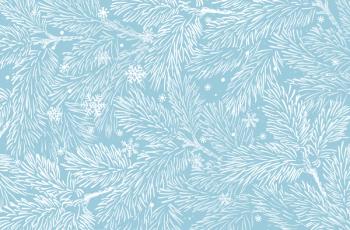
The Latest in Data Analytics, Statistics, Machine Learning, and Artificial Intelligence
Some of the most recent articles in data analytics, statistics, machine learning, and artificial intelligence are presented below.
It is a data-driven world, and spectroscopy is at the forefront of several data innovations.
Below is a compilation of recent research news that highlight the latest advancements in data analysis, machine learning (ML), and artificial intelligence (AI).
A recent study by researchers from the University of Campinas (UNICAMP) and IMT Nord Europe tested an electronic tongue (e-tongue) prototype for food and beverage analysis. The device accurately distinguished between fresh and industrialized coconut water by measuring impedance data and utilizing machine learning techniques like PCA and PLS-DA (1). The e-tongue achieved over 90% accuracy in classifying samples based on key parameters like soluble solid content and titratable acidity (1). This tool, therefore, showcases its potential as a faster, cost-effective alternative to traditional methods when it comes to quality control in the food industry. However, the authors acknowledge that further research is needed for commercial adoption (1).
A recent review published in TrAC Trends in Analytical Chemistry highlighted how AI and ML are improving water quality monitoring. These technologies enhance the detection of pollutants in water sources, such as drinking water, surface water, and wastewater, by analyzing spectral data (2). AI-based models can quickly identify contaminants, predict water quality parameters, and support early warning systems, addressing challenges in traditional monitoring methods (2). Although promising, several limitations remain, which include the need for large, diverse data sets. The review emphasizes the importance of selecting appropriate ML algorithms for specific water quality issues to ensure effective management.
A recent study published in Foods highlighted the potential of AI-powered spectroscopy for rapid, non-destructive food analysis, as well as the significant challenges that remain. Conducted by researchers from institutions like Queen’s University Belfast, the study emphasizes that while vibrational spectroscopy, combined with AI, can offer quick assessments of food quality, small sample sizes, overuse of complex models, and difficulties in transitioning to industrial settings hinder its effectiveness (3). The authors stressed the need for larger data sets, better experimental designs, and robust validation to ensure AI-driven methods can reliably enhance food quality assessment and eventually replace traditional techniques (3).
A new study from Zhejiang University has developed a non-linear memory-based learning (N-MBL) model that significantly improves soil property predictions using visible near-infrared (vis-NIR) spectroscopy, a rapid, non-destructive method. Traditional linear models, like partial least squares regression, struggle to capture the complex relationships between soil properties and spectral data (4). N-MBL, tested on a large soil spectral library, outperformed conventional models, especially in predicting soil organic matter and total nitrogen (4). This advancement in non-linear modeling offers a more accurate and reliable approach to soil analysis, with potential benefits for improving agricultural productivity and addressing global food security (4).
A recent study published in Food Chemistry demonstrates how combining near-infrared (NIR), Raman, and ultraviolet-visible (UV-vis) spectroscopy with chemometrics can enhance beer production efficiency. Researchers from Sichuan University and Wuliangye Group developed a real-time monitoring method for the brewing process of Qingke beer, focusing on key components like sugars, amino nitrogen, and phenols (5). Using neural network and partial least squares models, they achieved precise predictions, improving consistency and quality control in the brewing process (5).
References
- Wetzel, W. Evaluating the Efficacy of the Electronic Tongue Prototype Using Machine Learning Models. Spectroscopy. Available at:
https://www.spectroscopyonline.com/view/evaluating-the-efficacy-of-the-electronic-tongue-prototype-using-machine-learning-models (accessed 2024-09-24). - Wetzel, W. Artificial Intelligence and Machine Learning: Assessing Water Quality. Spectroscopy. Available at:
https://www.spectroscopyonline.com/view/artificial-intelligence-and-machine-learning-assessing-water-quality (accessed 2024-09-24). - Workman, Jr., J. AI-Powered Spectroscopy Faces Hurdles in Rapid Food Analysis. Spectroscopy. Available at:
https://www.spectroscopyonline.com/view/ai-powered-spectroscopy-faces-hurdles-in-rapid-food-analysis (accessed 2024-09-25). - Workman, Jr., J. Non-Linear Memory-Based Learning Advances Soil Property Prediction Using vis-NIR Spectral Data. Spectroscopy. Available at:
https://www.spectroscopyonline.com/view/non-linear-memory-based-learning-advances-soil-property-prediction-using-vis-nir-spectral-data (accessed 2024-09-25). - Wetzel, W. Using Multispectral Analysis Combined with Chemometrics to Improve Beer Production. Spectroscopy. Available at:
https://www.spectroscopyonline.com/view/using-multispectral-analysis-combined-with-chemometrics-to-improve-beer-production (accessed 2024-09-25).
Newsletter
Get essential updates on the latest spectroscopy technologies, regulatory standards, and best practices—subscribe today to Spectroscopy.




